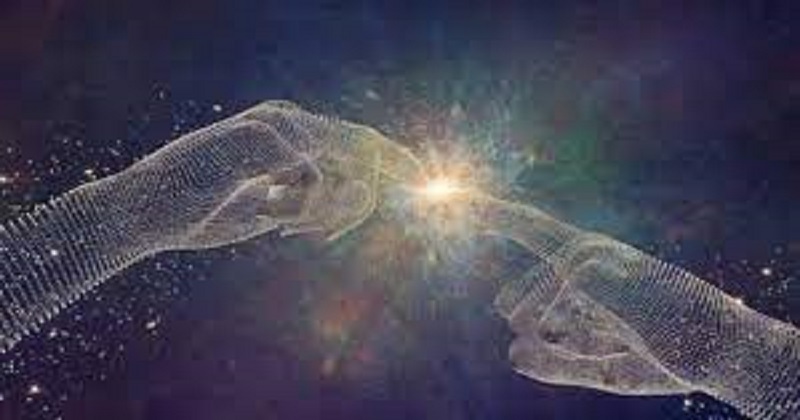
A brilliant scientist had only scratched the surface of a phenomenon that would revolutionize physics when Albert Einstein first proposed that there are ripples in the fabric of spacetime in 1915. About 100 years later, Einstein’s successors detected the first gravitational waves arriving at the Earth from a cataclysmic event in the distant universe. A new window into the cosmos was opened by the discovery.
Laser Interferometer Gravitational-Wave Observatory (LIGO) in Louisiana and Washington detects gravitational waves. One Indian-born physicist now wants to build such an observatory around 3,80,000 kilometers from the planet — on the moon. Dr. Karan Jani, a professor of physics at Vanderbilt University, has proposed setting up a gravitational wave infrastructure on the Moon and using the lunar environment to study numerous changes in the universe, from the merger of black holes to the collision of neutron stars. Dr. Karan Jani said that these waves offer a new look into the fundamental laws of the universe.

The astrophysicist wrote in a paper published in the Journal of Cosmology and Astroparticle Physics that a lunar-based observatory is ideal for probing frequencies that are challenging for both Earth or Space based detectors. As of now, Gravitational-Wave Lunar Observatory for Cosmology (GLOC) may be several decades away, but as the US, Russia, China and India rush to the Moon, several missions are planned to establish a lunar presence.
What is a gravitational wave?
The gravitational waves are ripples in space-time that carry information about their dramatic origins and about gravity that could not otherwise be gathered. When two bodies orbit each other, such as planets or stars, something special occurs. This kind of movement, he believed, could cause ripples in space. Waves travel at the speed of light, squeezing and stretching anything in their path as they pass. Gravitational waves are created when a star explodes asymmetrically, called a supernova.
The waves look like the ripples in a pond when a stone is tossed into it. On September 14, 2015, the LIGO detectors detected the first gravitational waves, which caused minute ripples in space and time as they passed through Earth. Two black holes merged to create the waves. Scientists estimate that the black holes for this event were 29 and 36 times more massive than the sun, and it occurred 1.3 billion years ago. A fraction of a second’s worth of mass was converted into gravitational waves.

How does a Gravitational Wave Lunar Observatory work?
Lunar observatories will use identical principles to detect gravitational waves from the Moon. With a geocentric orbit and the moon’s environment, it will study black hole mergers, neutron star mergers, and elusive dark matter candidates within almost 70% of all the observable matter in the universe. In an email, Dr. Karan Jani said, ‘A lunar observatory can measure gravitational waves in a way that no other experiment on earth (such as LIGO) or space mission will be able to for several decades’.
Why is there a moon?
According to the astrophysicist from Vadodara, the Moon is seismically much quieter than Earth, which is both volcanically and seismically active. Listening to and detecting those ultra-sensitive waves, which have been traveling millions of years before hitting our solar system and planet, is now possible.
‘There are no major environmental disturbances on the Moon, and its vacuum is better than anything we can build on Earth. This is a perfect setting for a gravitational wave detector. We may be discovering sources that we do not anticipate. GLOC could be the jewel in the crown of science on the moon,’ Avi Loeb, professor of science at Harvard University, said in a statement.
Read more: Nambi Narayanan ISRO spy case: CBI registers FIR against Kerala officials
As countries decide to make a permanent presence on the lunar surface, a new rush to the moon follows. The Artemis program, which seeks to send the first woman and the next man to the moon as early as 2024, could unlock new physics and discoveries about the universe. Scientists expect to have several scientific instruments on the lunar surface this decade that will be essential to testing crucial detector technologies.
‘I anticipate seeing a prototype in a shorter period of time,’ Dr. Karan Jani said. ‘It takes many phases to build a fully functioning observatory,’ he noted, adding that all cutting-edge large-scale physics experiments now require global collaboration. ‘I think the time has come for democratic countries to form a new lunar council and set a vision for building infrastructure on the moon,’ he said.
Private companies’ increasing interest in interplanetary explorations could pave the way for cheaper and faster services and technologies reaching beyond Earth’s orbit in the coming decades, unravelling deeper mysteries of the universe and how it all started.

Post Your Comments